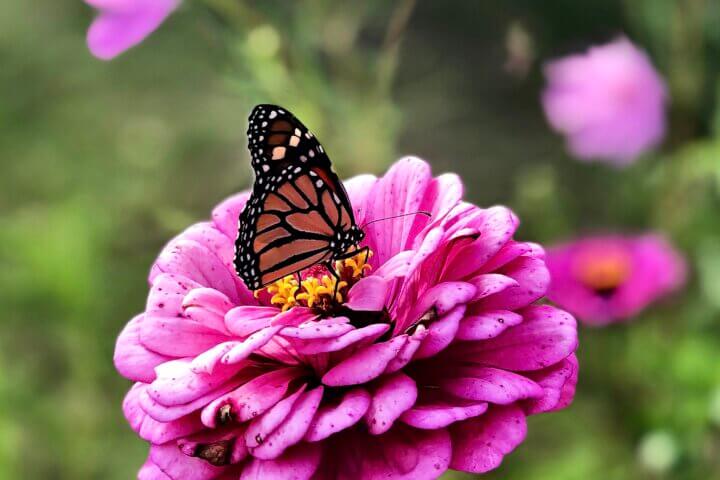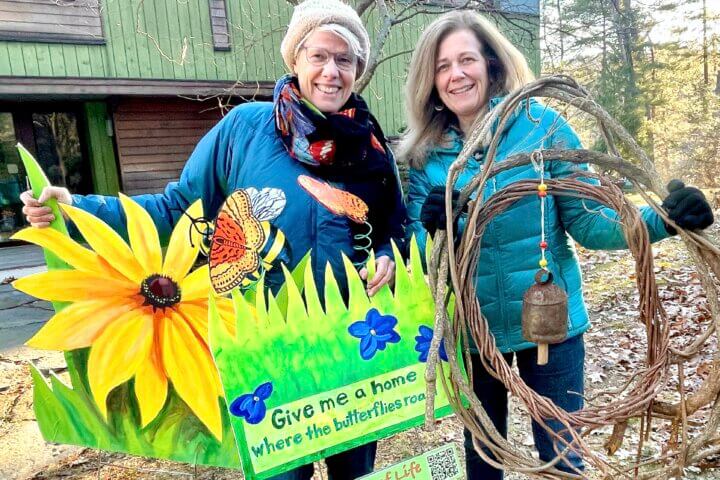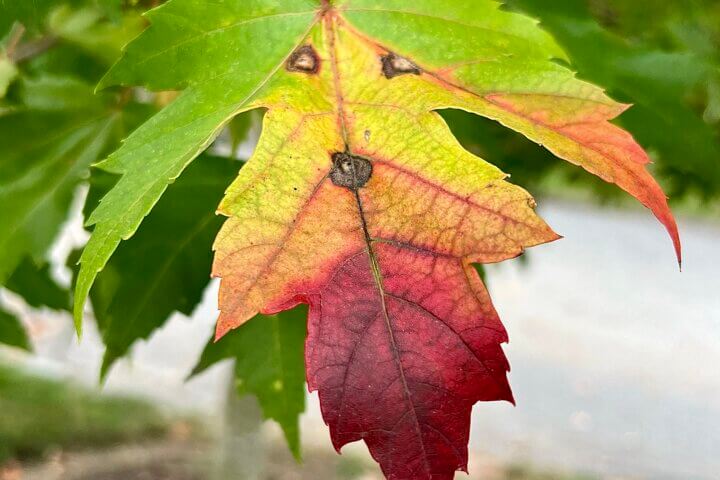Every fall, working from home, I dread the commencement of the leaf blower: a jarring, seemingly endless whine ricocheting through the neighborhood. I reach for my earplugs, thinking about the rakes and leaf piles of my youth: the glorious mess of organic matter in its rich hues of yellow, orange, red and chocolate brown, all collecting now underneath the maple, oak, crabapple and walnut trees in my yard.
The Concord landscape in fall is breathtaking; crunchy leaves underfoot emit an earthy, intoxicating scent on a woodland walk. Signaling a change of season to shorter, crisp days and hard-frost nights, it will soon give way to the winter solstice and the meditative quiet of the winter moons (Cold, Wolf, Snow).
We have been led to believe we must rake up every leaf. Part of this is social contract, part curb appeal, part a desire for control and to put our landscapes to bed for the winter. But as we rethink how to reduce our carbon footprint and nurture the world around us, leaving the leaves on the ground–instead of clearing them–is starting to take hold. But why is it beneficial, even necessary? And how do we go about it?
It starts with a better understanding of winter dormancy.
During the coldest months, our gardens, though dormant, are still at work. Fallen leaves, broken branches, perennial stems and seed heads are where native pollinators–bees, butterflies, beetles, and moths–lay their eggs, find their food, and build their shelter. This organic litter also insulates plant roots from harsh temperatures, decomposes gradually to create a rich, living soil, which then stores carbon for better climate resilience. Most of our native butterfly and moth species don’t migrate (except, of course, for the monarch) but overwinter in leaf litter. Leaf blowers are particularly damaging.
I witness this beneficial life cycle first hand every spring, when the birds arrive to feast on the inchworm hatch in my crabapple trees. In late winter, cankerworm moths emerge from the soil below the trees, and the females, being wingless, climb up to lay their eggs. Migrating birds then feast on the hatchling inchworms.
Magnolia warblers, common yellowthroats, blue eyed vireos and rose-breasted grosbeaks arrive first, soon followed by the Baltimore oriole and scarlet tanager. The same pattern takes shape every year: the trees bud and flower, the inchworms hatch, and the birds arrive. It was my old neighbor, the late Patrick McGrath of McGrath Farm on Barretts Mill Road, who pointed out this symbiotic lifecycle to me in its exactness. “When the oak tree flowers, the Baltimore Oriole arrives,” I remember him saying.
I do not clean up all of my leaves on my own. On five acres it would be a colossal undertaking. With some help, I push them into natural areas and perimeters. This year, however, I’m trying to leave more: beneath a massive American linden and my crabapple trees. I’m also going to leave them in my perennial beds (tidying with a sharp border), let my vegetable and flower garden remain in situ for the winter (no cutting back until spring; my hope is carpenter and mason bees will lay their eggs in the hollow tubes), and place a large leaf pile by my compost to add to my kitchen scraps during the cold winter months. Seed pods and bent stalks are beautiful in the snow, and my household enjoys watching our winter resident birds–juncos, cardinals, chickadees, goldfinches and bluebirds–forage among them throughout the winter.
Most homeowners own a half-acre or less and grapple with neighbors, abutting properties, aesthetic concerns and little space. Yet even a small area where the leaf litter remains provides habitat and enriches the soil. Natural, undisturbed areas with rocks and leaf litter also support non-migratory birds, salamanders, newts, and frogs.
For more problematic areas–leaves on lawns, walkways, and driveways that smother grass, turn to slippery mush and clog drains–rake them up and create a pile to add gradually your compost (leaves break down very quickly), chop them up to spread as a natural mulch, or (of course!)… jump in them.
To paraphrase the great Wendell Berry: soil is the great life connector between all of us. Leaving the leaves honors this, and is a great place to start.




